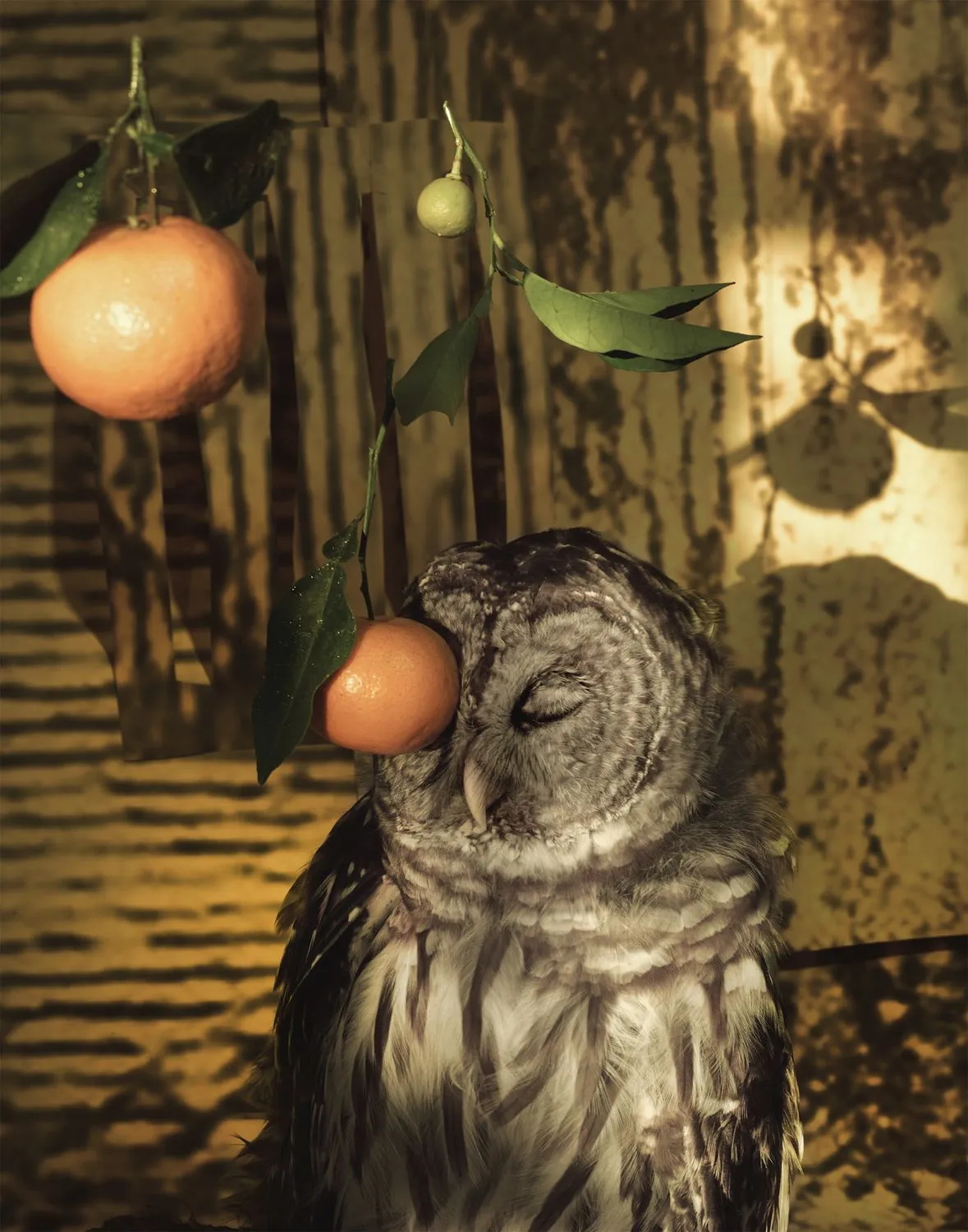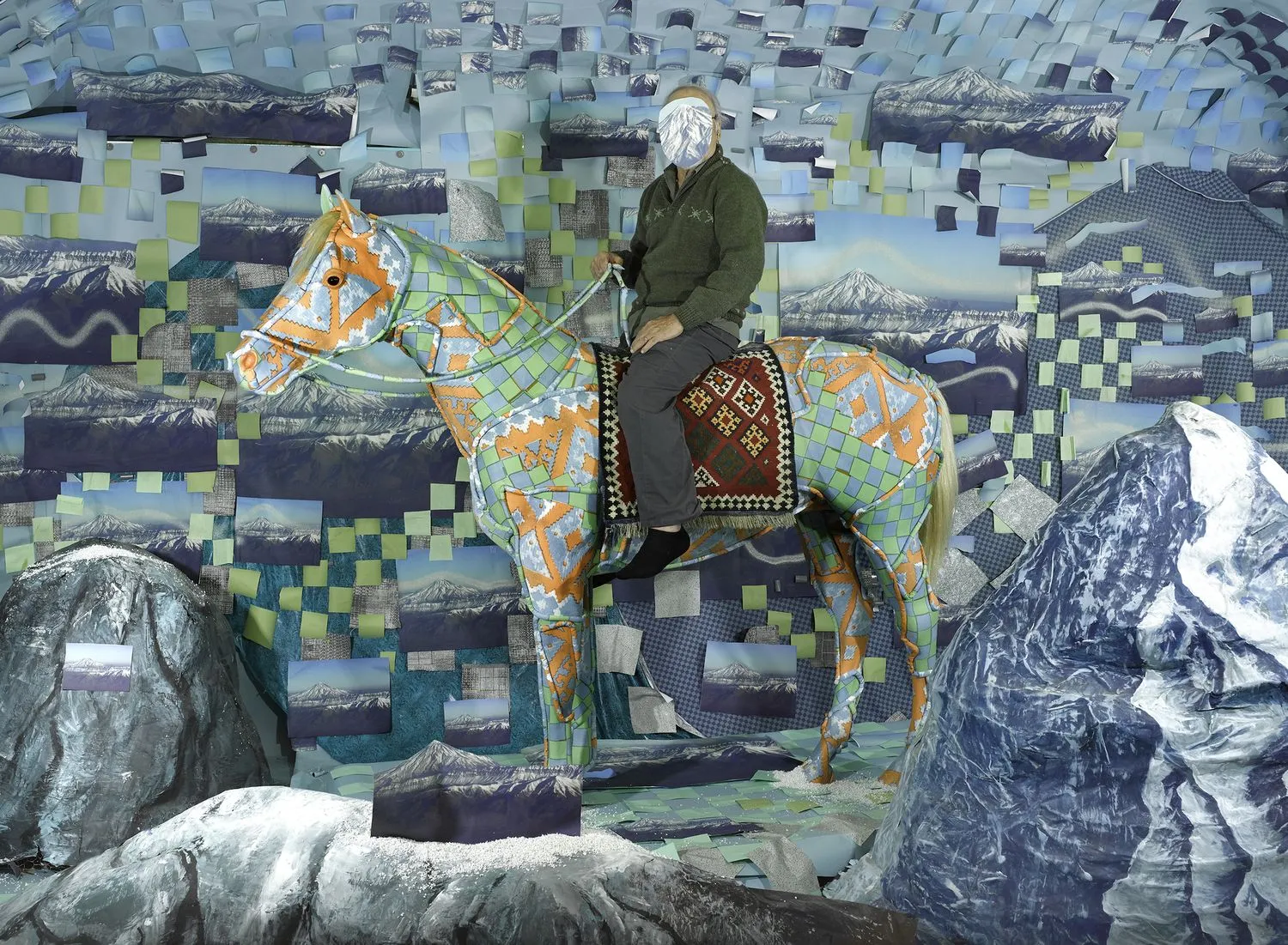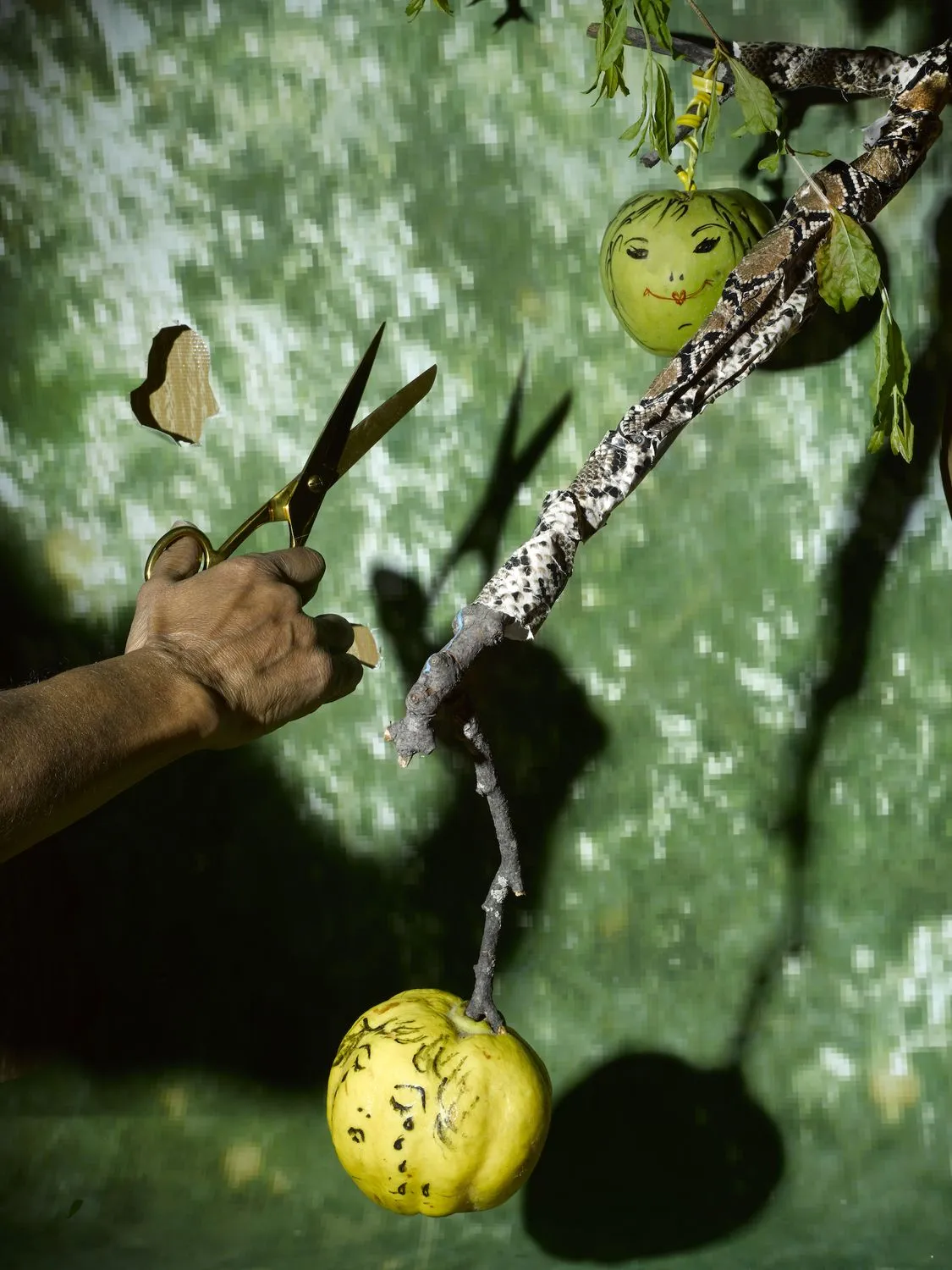 Sheida Soleimani, Laleh, 2023 © Sheida Soleimani, Courtesy Edel Assanti, London and Harlan Levey Projects, Brussels
Sheida Soleimani, Laleh, 2023 © Sheida Soleimani, Courtesy Edel Assanti, London and Harlan Levey Projects, Brussels At the intersection of personal memory and global politics, Sheida Soleimani crafts complex visual narratives that unfold like layered dreams—where exile, care, and resistance intertwine. Drawing from her Iranian-American heritage, her work transcends simple storytelling, inviting us to navigate the fragile terrain of history, displacement, and healing.
Known for blending staged photography, symbolic props, and family ephemera, Soleimani's approach is both deeply intimate and expansively political. Her images blur boundaries between reality and myth, inviting viewers into spaces where history is not fixed but continually reimagined. The artist's dual role as a wildlife rehabilitator further expands her practice, introducing themes of vulnerability, survival, and interspecies kinship.
This approach is at the heart of Panjereh, currently exhibited at the International Center of Photography in New York, which unfolds like a map of fractured memories and entangled histories. Drawing on her family's experience of political exile from Iran, the exhibition navigates the spaces between personal narrative, geopolitical critique, and care as a form of resistance. Curated by Elisabeth Sherman, Panjereh marks Soleimani's first solo exhibition in the city and brings together over forty photographs from her Ghostwriter series alongside a new body of work focused on injured birds.
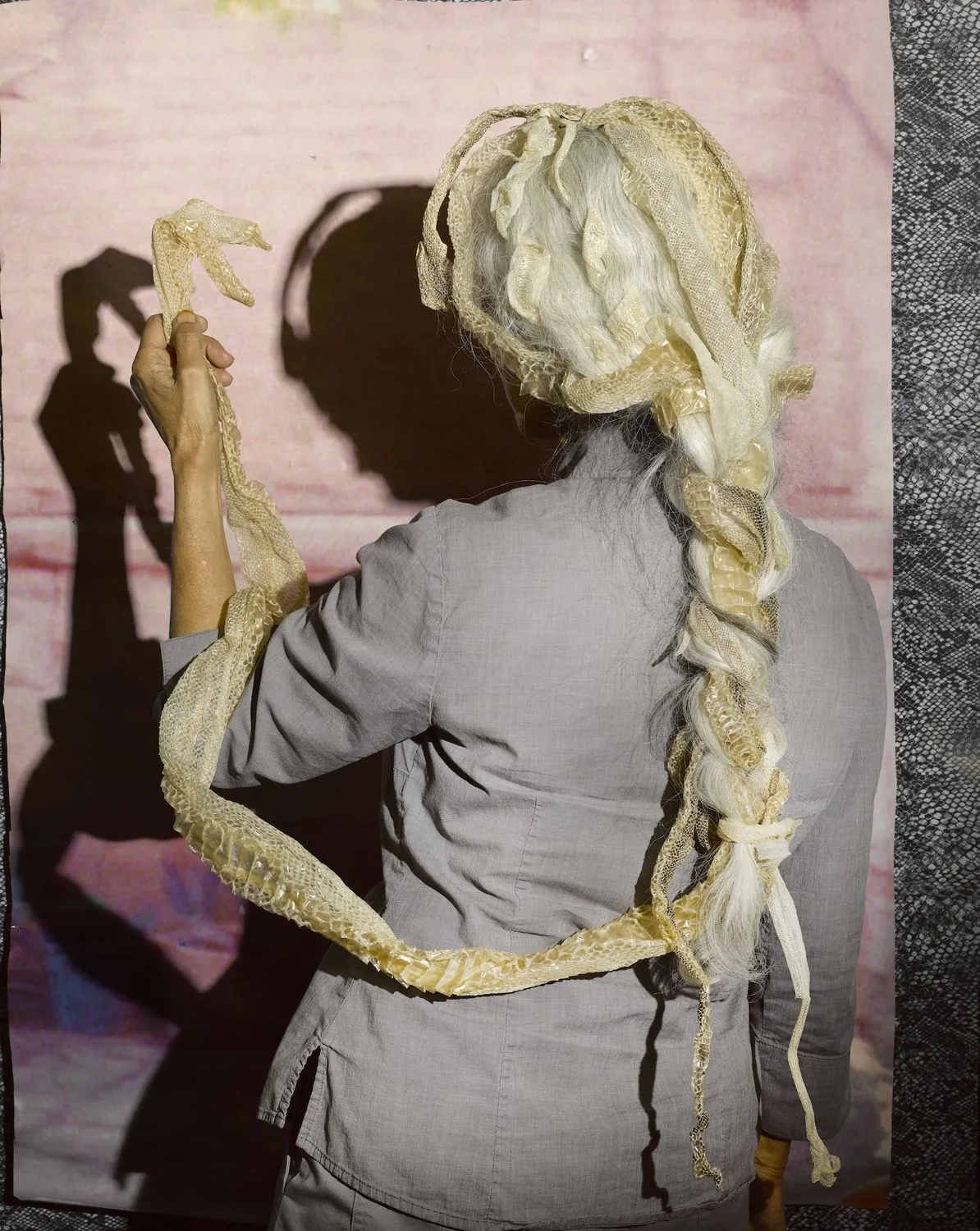
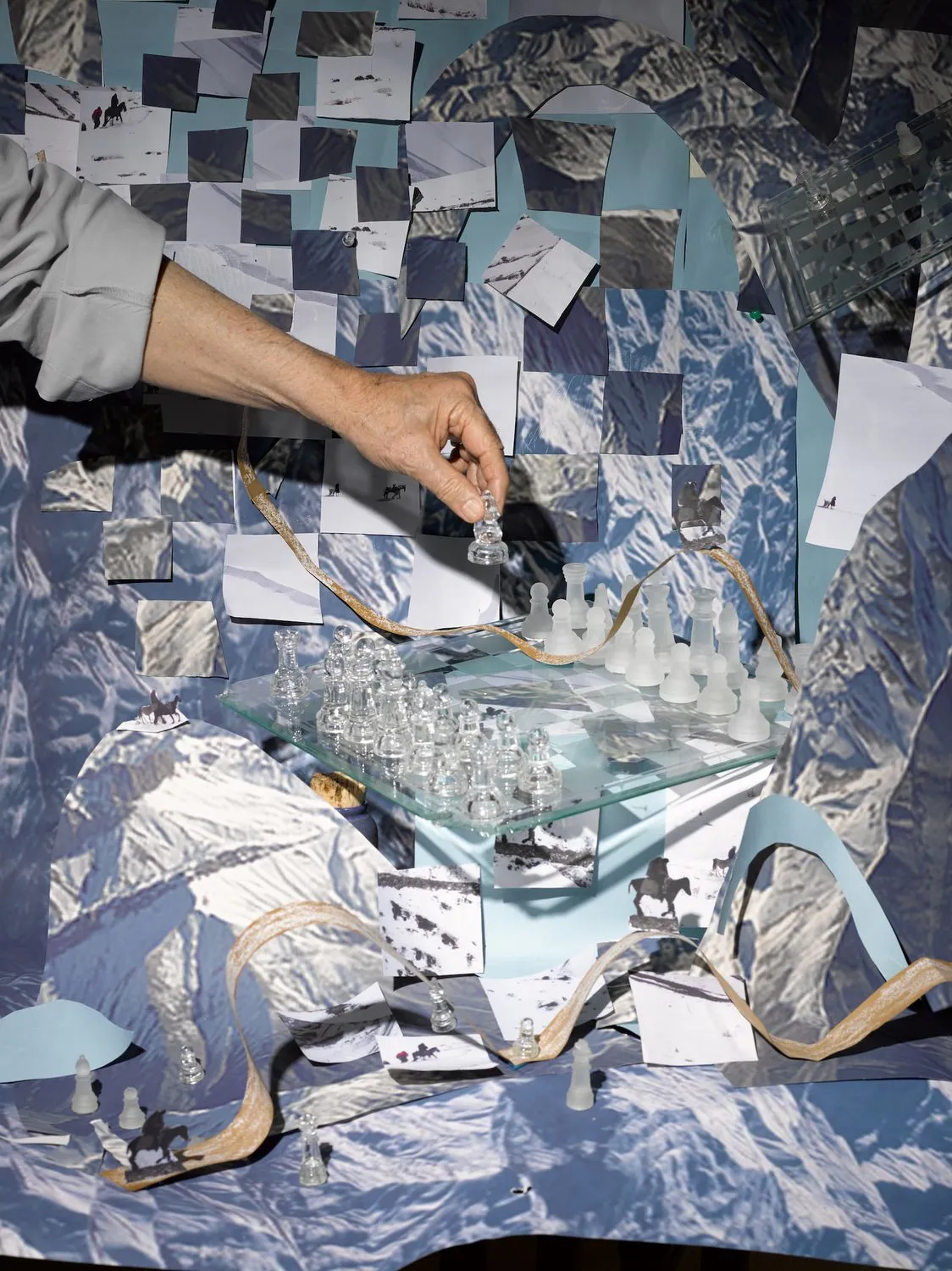
The Farsi title, which translates as "window" or "passageway," gestures toward the conceptual structure of the show: a series of portals into lives shaped by forced migration, state violence, and the long aftermath of flight. Soleimani's richly constructed photographic tableaux—dense with archival materials, symbolic props, and surreal compositions—trace her parents' journey as pro-democracy activists fleeing Iran after the 1979 revolution. But these images don't just reconstruct the past. They reshape it, suggesting that memory, like exile, rarely follows a straight line.
What sets Ghostwriter apart is its refusal to settle into familiar modes of documentary. Instead, Soleimani works with a visual vocabulary closer to magical realism. Her photographs layer textures, objects, and bodies into stage-like scenes where meaning accumulates through metaphor. Fragments of domestic life are juxtaposed with emblems of displacement and resistance, while recurring motifs—birds, barbed wire, foliage—stand in for the things that can't be said outright.


Alongside these narrative-heavy works, Panjereh introduces a quieter but no less powerful series: close-up analog portraits of wounded migratory birds, many of which Soleimani has personally cared for through her wildlife rehabilitation center, Congress of the Birds. These images, grouped under the title Flyways, trade visual density for intimacy. Shot in sharp detail, the birds appear fragile but resilient—tiny, embodied archives of struggle and survival.
If Ghostwriter reflects on the ruptures caused by exile, Flyways seems to ask what forms of care might heal or hold those ruptures. There's an implicit argument here: that caregiving, particularly across generations and species, is not separate from political resistance but deeply entangled with it. Soleimani's mother, once a nurse in Iran, took up bird care after migrating to the U.S.—a gesture of continuity that becomes both metaphor and method in the artist's own practice.
Rather than presenting a single narrative arc, Panjereh invites viewers into a constellation of interconnected stories: of flight, survival, witness, and repair. It's an exhibition that resists closure, offering instead a visual language capable of holding contradiction—tenderness alongside critique, beauty alongside violence, myth alongside memory.
Sheida Soleimani's exhibition Panjereh will be on view at the International Center of Photography in New York until September 28th, 2025.

